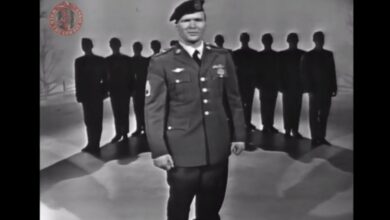“After the Fire Is Gone” Showcases a Brilliant Vince Gill, Patty Loveless Pairing
“After the Fire Is Gone,” performed by Vince Gill and Patty Loveless, is an evocative exploration of the nuanced dimensions of love, loss, and remembrance. As a duet, it transcends mere musicality, creating a profound dialogue between two voices that resonate with the intense emotions tied to the complexities of relationships. The song’s narrative dives into the heartache that often accompanies love’s fading embers, capturing the essence of longing and regret in a way that feels universally familiar.
The original version of “After the Fire Is Gone,” recorded by the esteemed Conway Twitty and Loretta Lynn in the early 1970s, is a cornerstone of traditional country music. At that time, the song struck a chord with listeners, reflecting the era’s cultural sentiments and societal dynamics surrounding love and partnership. Twitty and Lynn, both titans in the genre, delivered a rendition that embraced the raw emotions tied to the message. Their harmonies laid the groundwork for future interpretations, establishing a timeless quality that would resonate across generations.
Vince Gill, born in 1957 in Norman, Oklahoma, has become a beloved figure in country music, renowned not only for his rich, golden voice but also for his exceptional songwriting. His journey in music began at a young age, steeped in the sounds of country, bluegrass, and rock. After years of honing his talents through various bands and performances, Gill achieved tremendous success in the 1980s and 1990s. His contributions include numerous chart-topping hits, several Grammy Awards, and a reputation for technical proficiency on the guitar. Gill’s artistry is characterized by emotional depth, as he often draws from personal experiences, weaving autobiographical elements into his songs, which adds layers of sincerity to his music.
Patty Loveless also emerged as a prominent figure in the country music scene, captivating audiences with her powerful, emotive vocal delivery. Born in Pikeville, Kentucky, Loveless’s love for music was instilled in her from an early age, influenced by both the traditional country sounds of her childhood and the contemporary hits of her youth. Debuting in the 1980s, she quickly garnered acclaim for her dynamic vocal range and ability to convey deep emotional truths within her performances. Loveless’s music is often marked by its authenticity, exploring themes such as love, heartache, and resilience. Her style bridges the gap between traditional and modern country, solidifying her place as an essential artist in the genre.
The collaboration of Gill and Loveless on “After the Fire Is Gone” breathes new life into a classic, combining their unique vocal strengths to create a harmonious narrative. Their chemistry as performers is palpable, and it draws listeners into the emotional landscape that the song maps out. The interplay of their voices is not just a showcase of talent; it’s an intimate conversation that speaks to the struggles many face in relationships. This duet stands as a testament to the artistry involved in country music—where storytelling and emotion are paramount.
Lyrically, “After the Fire Is Gone” delves into the delicate balance between love and loss. It articulates the pain that accompanies the realization of a fading spark, resonating with anyone who has navigated the complexities of a relationship that has turned from joy to sorrow. The lyric “Love is where you find it when you find no love at home” serves as a poignant reminder of the emotional vacuums that can exist within partnerships, capturing an often uncomfortable truth about searching for connection in times of emotional turmoil. This reflection on longing and disillusionment strikes a universal chord, allowing listeners from various backgrounds to find their own stories within its verses.
The emotional depth of the song is enhanced by its rich imagery, evoking a sense of nostalgia for moments once cherished but now shadowed by pain. Themes of searching for love, the difficulty of letting go, and the bittersweet remembrance of what once was reverberate through its lyrics. As Gill and Loveless navigate this terrain together, they paint a vivid portrait of heartache that speaks to the resilience of the human spirit. Their harmonic dialogue embodies the shared experiences of many, enabling listeners to connect deeply with the song’s narrative.
As the song unfolds, it encapsulates the idea that while relationships may falter and love may dissipate, the lessons learned and the emotions experienced remain a part of who we are. The journey through heartache is portrayed with sensitivity, allowing the song to leave a lasting impact that extends beyond its musical form. Gill and Loveless exemplify the belief that through music, there can be healing and understanding, demonstrating an authentic portrayal of personal suffering and hope.
The legacy of “After the Fire Is Gone” continues to thrive as it is embraced by new audiences. Both Gill and Loveless have contributed to its timelessness by interpreting it with a fresh perspective while still honoring its roots. Their version serves as an enduring reminder that storytelling through song is a cherished tradition in the country music genre, showcasing the ability of music to touch lives, evoke emotions, and foster connections that span generations.
In this concert of emotions, Gill and Loveless reveal the intricate shades of love and loss as they perform “After the Fire Is Gone.” Their harmonious rendition captures the essence of a shared human experience, inviting listeners to engage with their own personal reflections of love and longing. Ultimately, this duet serves as a powerful testament to the enduring beauty of music, where every note and lyric can resonate deeply, proving that even from the ashes of heartbreak, hope can bloom anew.





